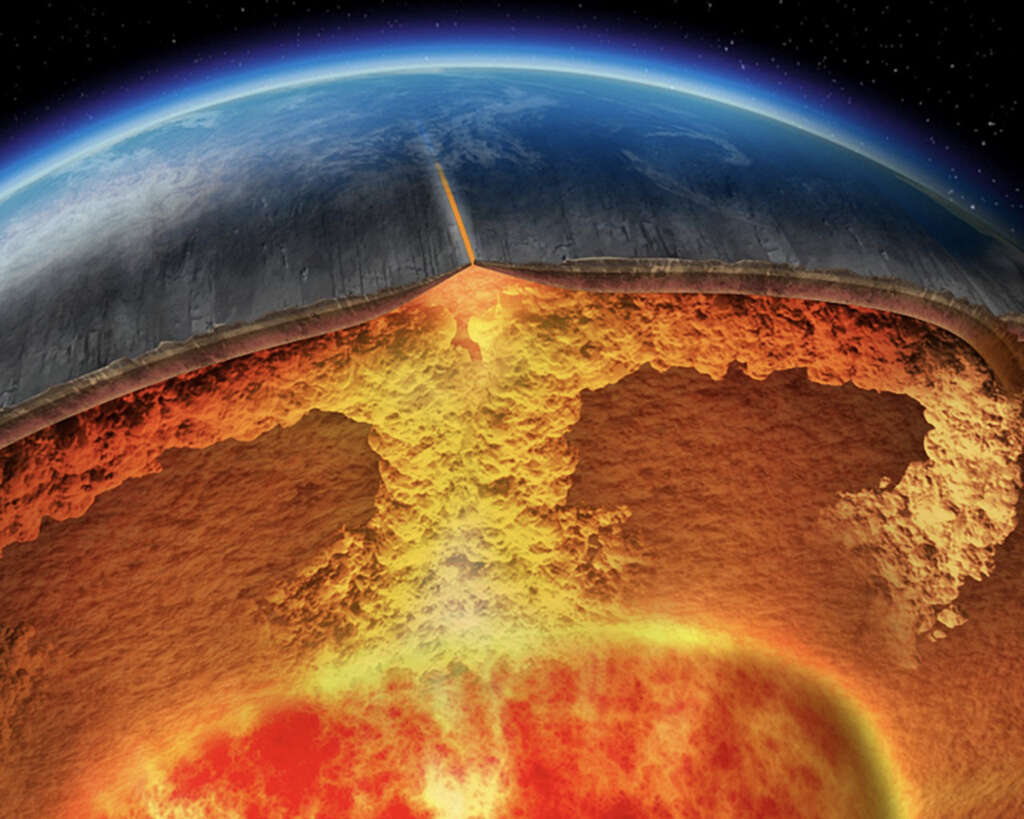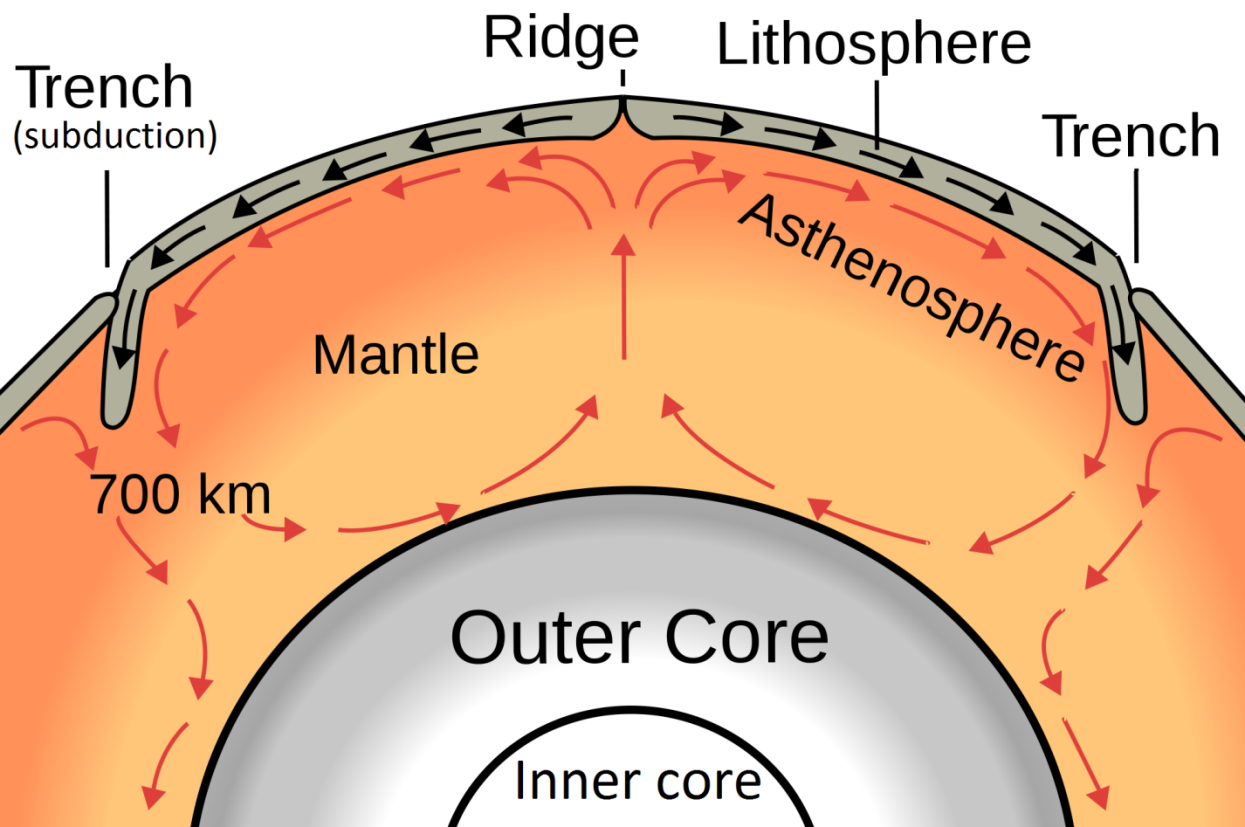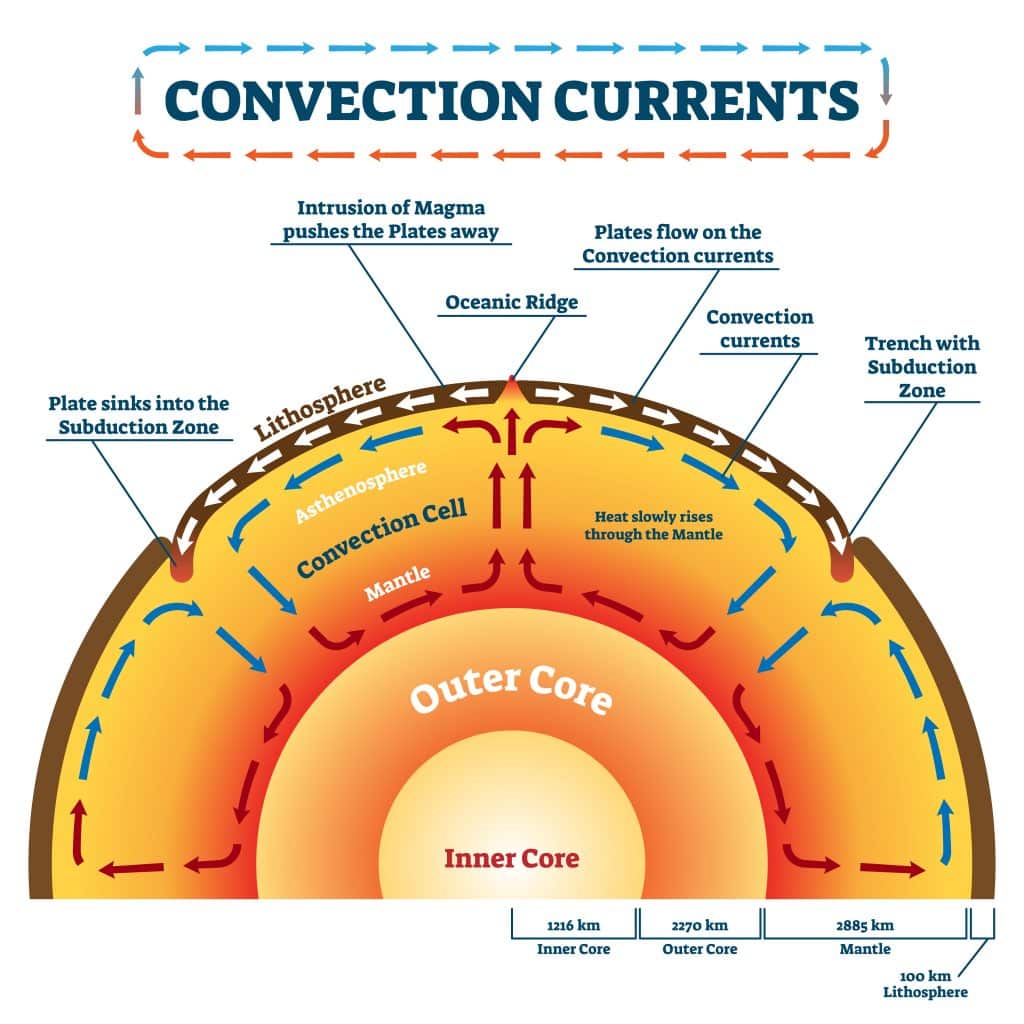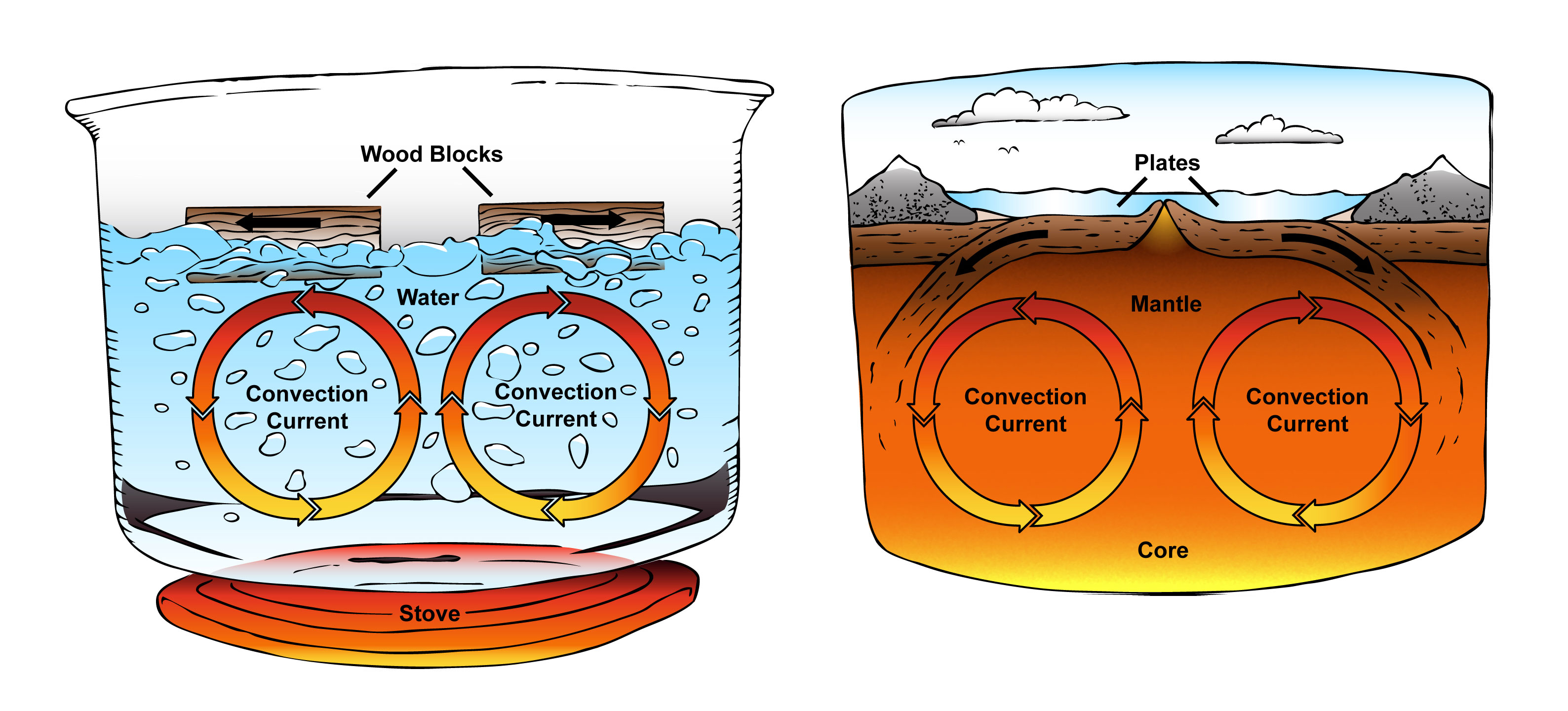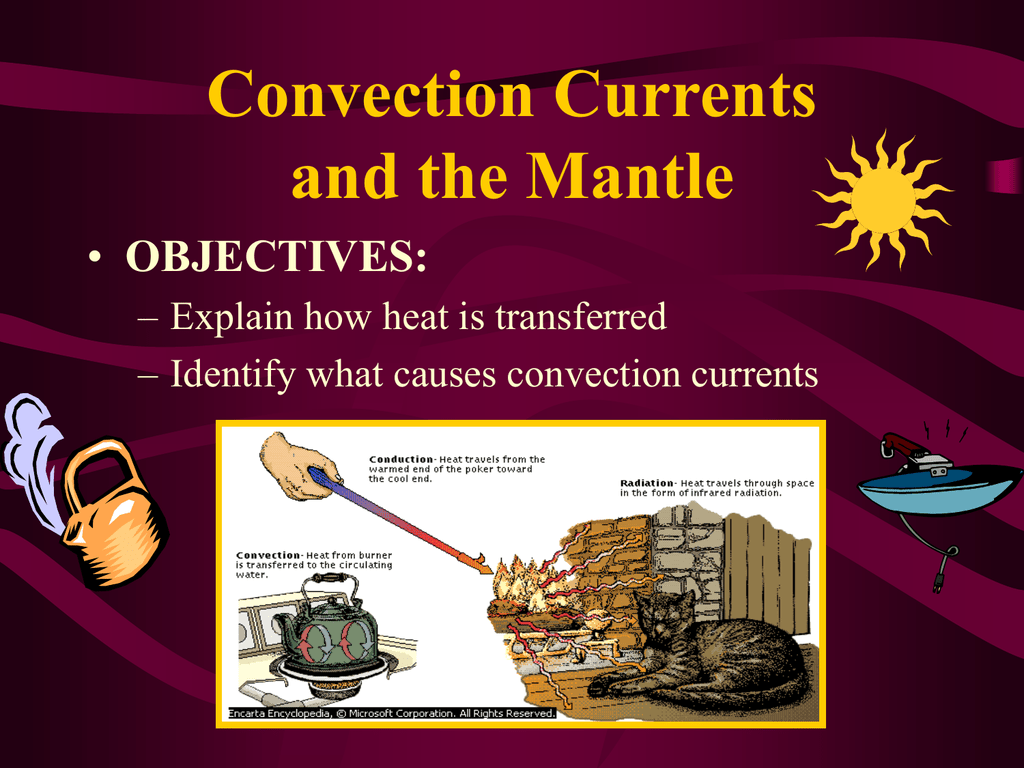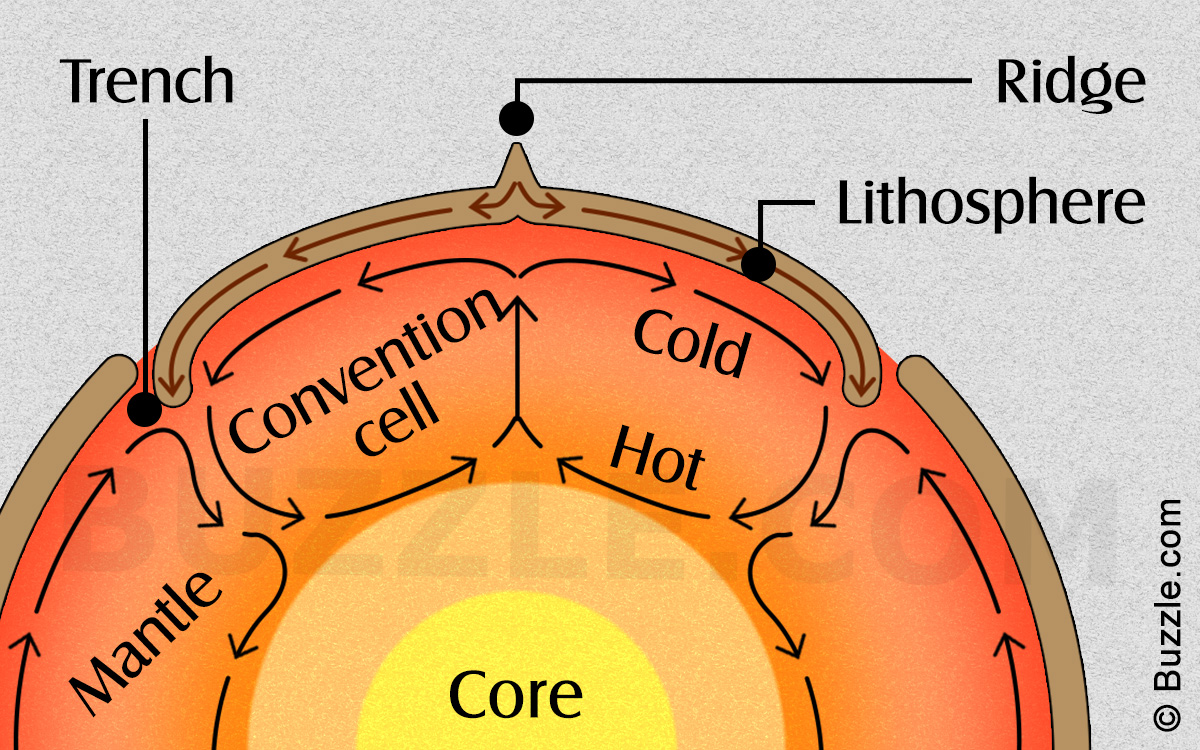How Convection Currents Form
How Convection Currents Form - Web what are convection currents? Convection currents are the transfer of heat within a fluid or gas caused by differences in temperature and density, creating a. In the north atlantic ocean, the water becomes so dense that it begins to sink down. Hot mantle rock rises from the core and moves along under the crust until. The gulf stream circulates as a result of the evaporation of water. Web there are three forms of thermal energy transfer: As the air near the ground warms, it. Part of physics (single science) energy revise test 1 2 3 4 5 6 convection heat can be transferred in liquids or gases. This model demonstrates convection currents and uses water, food coloring, a cup of very hot water and a votive candle as heat sources. Web convection currents are present everywhere, from the atmosphere to magma within the plates.
Web ccea heat transfer learn about how heat transfer occurs. The former are said to be more “buoyant” than the latter, and the vertical forces. Some solar water heaters use natural circulation. The gulf stream circulates as a result of the evaporation of water. As the air near the ground warms, it. Web in this article, we will talk more about convection currents. Web convection is the process by which less dense material rises and more dense material sinks. Transfer of heat energy takes place usually through any one of the three processes of conduction, convection and. Web there are three forms of thermal energy transfer: Examples of convection currents can be observed in a pot of soup heating on the stovetop, the.
The gulf stream circulates as a result of the evaporation of water. Web geography the restless earth revise video test 1 2 3 4 5 6 7 convection currents and plate movement the earth's crust is broken up into pieces called plates. As the air near the ground warms, it. Heat sources provide energy to their surroundings. The former are said to be more “buoyant” than the latter, and the vertical forces. Web converging currents drive plates into each other. Part of physics (single science) energy revise test 1 2 3 4 5 6 convection heat can be transferred in liquids or gases. Web convection current consists of charged particles moving in response to mechanical forces, as opposed to being guided by the electric field (sections 2.2 and/or. Web what are convection currents? In this process, the water increases in salinity and density.
What Are Convection Currents? Sciencing
Web converging currents drive plates into each other. Some solar water heaters use natural circulation. As the air near the ground warms, it. Web in this article, we will talk more about convection currents. Conduction involves molecules transferring kinetic energy to one another through.
Convection Currents What Are Convection Currents?
Systems of natural circulation include tornadoes and other weather systems, ocean currents, and household ventilation. The former are said to be more “buoyant” than the latter, and the vertical forces. Web converging currents drive plates into each other. Examples of convection currents can be observed in a pot of soup heating on the stovetop, the. In the north atlantic ocean,.
1.5 Fundamentals of Plate Tectonics Physical Geology
Web there are three forms of thermal energy transfer: Web moving particles transfer thermal energy through a fluid by forming convection currents. Heat sources provide energy to their surroundings. Web convection current consists of charged particles moving in response to mechanical forces, as opposed to being guided by the electric field (sections 2.2 and/or. Web convection currents are present everywhere,.
Section 2 Convection in the Mantle Nitty Gritty Science
Web convection current consists of charged particles moving in response to mechanical forces, as opposed to being guided by the electric field (sections 2.2 and/or. Transfer of heat energy takes place usually through any one of the three processes of conduction, convection and. Web in the atmosphere, convection currents occur due to the heating of the earth’s surface by radiant.
What Are Convection Currents? Science Trends
Web converging currents drive plates into each other. Web in the atmosphere, convection currents occur due to the heating of the earth’s surface by radiant energy from the sun. Convection currents move thermal energy through many fluids,. As the air near the ground warms, it. Some solar water heaters use natural circulation.
The Air Up There Educational Resources K12 Learning, Space Science and
Heat sources provide energy to their surroundings. Part of physics (single science) energy revise test 1 2 3 4 5 6 convection heat can be transferred in liquids or gases. As the air near the ground warms, it. This model demonstrates convection currents and uses water, food coloring, a cup of very hot water and a votive candle as heat.
What are Convection Currents?
Hot mantle rock rises from the core and moves along under the crust until. The gulf stream circulates as a result of the evaporation of water. Web activities what are the examples of convection currents? When fluid receives this energy, molecules inside it. Web in this article, we will talk more about convection currents.
Convection in the Sun Science News
Convection currents move thermal energy through many fluids,. The gulf stream circulates as a result of the evaporation of water. Heat sources provide energy to their surroundings. In the north atlantic ocean, the water becomes so dense that it begins to sink down. Conduction involves molecules transferring kinetic energy to one another through.
Convection Currents and the Mantle OBJECTIVES
The gulf stream circulates as a result of the evaporation of water. Transfer of heat energy takes place usually through any one of the three processes of conduction, convection and. Web what are convection currents? Examples of convection currents can be observed in a pot of soup heating on the stovetop, the. Hot mantle rock rises from the core and.
What are Convection Cells and How do They Work? Science Struck
Some solar water heaters use natural circulation. Part of physics (single science) energy revise test 1 2 3 4 5 6 convection heat can be transferred in liquids or gases. Transfer of heat energy takes place usually through any one of the three processes of conduction, convection and. Conduction involves molecules transferring kinetic energy to one another through. Web convection.
Web Convection Is The Process By Which Less Dense Material Rises And More Dense Material Sinks.
When fluid receives this energy, molecules inside it. Convection currents are the transfer of heat within a fluid or gas caused by differences in temperature and density, creating a. Systems of natural circulation include tornadoes and other weather systems, ocean currents, and household ventilation. The basic principle of a convection current is that warm air rises because of the.
In This Process, The Water Increases In Salinity And Density.
The former are said to be more “buoyant” than the latter, and the vertical forces. Diverging currents pull them apart. Heat sources provide energy to their surroundings. Web activities what are the examples of convection currents?
Web Convection Currents Occur When A Fluid Is Near A Heat Source.
In the north atlantic ocean, the water becomes so dense that it begins to sink down. Conduction involves molecules transferring kinetic energy to one another through. Part of physics (single science) energy revise test 1 2 3 4 5 6 convection heat can be transferred in liquids or gases. Hot mantle rock rises from the core and moves along under the crust until.
Web In The Atmosphere, Convection Currents Occur Due To The Heating Of The Earth’s Surface By Radiant Energy From The Sun.
As the air near the ground warms, it. Web moving particles transfer thermal energy through a fluid by forming convection currents. Web in this article, we will talk more about convection currents. Web convection current consists of charged particles moving in response to mechanical forces, as opposed to being guided by the electric field (sections 2.2 and/or.

